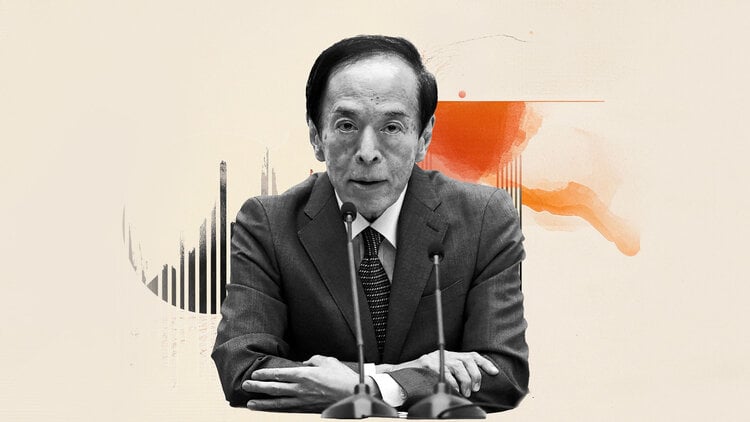- S&P 500 extends the rally and hits new multi-month highs during the European session on Friday.
- Market sentiment has improved markedly after the passage of the debt limit bill.
- Today’s focus will be on the non-farm payrolls (NFP) report.
The index S&P 500 extends the previous day’s rise and hits new yearly highs. At time of writing, the index is trading around 4,240 points, up 0.50% on the day, after rising 0.99% the day before. The S&P 500 trades at levels not seen since August 19, 2022.
Market sentiment has improved remarkably after the approval on Thursday by the United States (USA) Senate of the bill to suspend the debt limit until January 1, 2025.
Besides, several US Federal Reserve (Fed) officials have been more cautious on new rate hikes, sharply lowering market expectations for the next meeting on June 13-14.
The focus of investors’ attention will be today on the official US labor market report, the non-farm payrolls (NFP) report.
US Debt Ceiling Deal Boosts S&P 500 Sentiment
Market sentiment improved already on Thursday after the US House of Representatives voted in favor of a bill to suspend the debt ceiling late on Wednesday.
“The Republican-controlled House of Representatives voted 314-117 to send the legislation to the Senate, which must enact the measure and get it to President Joe Biden’s desk before a Monday deadline, when the government is expected to run out of money to pay their bills,” Reuters said.
Meanwhile, the US Senate voted to pass the bill to suspend the debt limit on Thursday night. “This bipartisan agreement is a great victory for our economy.“said US President Joe Biden, who told reporters that will enact the law as soon as Friday. Biden also said, “I want to thank Leader Schumer and Leader McConnell for quickly passing the debt ceiling bill.”
Reflecting the risk appetite sentiment in the markets, the major US stock indices closed higher on Thursday, with the S&P 500 closing at 4,220 points up 0.99% on the day.
Subsequently, the US Secretary of the Treasury, Janet Yellen said that “the debt ceiling legislation protects the full faith and credit of America and preserves our financial leadership.”. Yellen added that “I continue to firmly believe that the full faith and credit of the United States should never be used as a bargaining chip“.
Fed comments lower expectations for further rate hikes, supporting the S&P 500
Lower expectations for further rate hikes by the US Federal Reserve help the S&P 500 move higher. Uncertainty in the markets weighs on the movements of the indices, but recent comments from several members of the Fed suggest that the Federal Reserve could leave rates unchanged at the next meeting June 13-14.
It’s worth remembering that on Wednesday, a couple of influential FOMC members expressed their willingness to pause interest rate hikes this month. The Governor of the Federal Reserve (Fed), Philip Jefferson, said a pause on rate hikes at the next FOMC meeting would give time to analyze more data before making a decision on the scope of further tightening. For his part, the president of the Philadelphia Fed, Patrick Harker, was in favor of a pause in the next meeting.
Besides, Nick Timiraosfrom the Wall Street Journal (WSJ), cited several Fed speakers and recently disparate US data to suggest that the Federal Open Market Committee (FOMC) is likely to keep interest rates stable in June.
On Thursday, Philadelphia Fed president Patrick Harker, reiterated that it is time to hit the “stop button” during at least one meeting and see how it evolves.
These dovish comments should be noted as the Fed’s “quiet period” begins on Saturday ahead of its next rate decision.
US data supports the rise of the S&P 500
US data has recently shown improvements in the labor market, but with the inflation components of the prices paid declining.
On Thursday, the private employment report released by ADP revealed that 278,000 jobs were created in May, well above the 170,000 expected. Additionally, weekly jobless claims rose slightly to 232,000 in the week ending May 27 from 230,000 the week before, but came in below the 235,000 expected by the market.
Finally, the employment component in the ISM manufacturing PMI survey rose to 51.4 points from 50.2, its highest level since August 2022.
On the other hand, the survey prices paid index fell sharplyfalling back to 44.2 from 53.2, a far cry from the predicted 52 points.
In addition, the US Bureau of Labor Statistics. revised Q1 Unit Labor Cost increase to 4.2% from 6.3% of the advanced estimate.
Following the release of this data and moderate comments from Fed officials, the probability that Fed rates will remain unchanged in the current range of 5%-5.25% is now close to 74%:
The focus will be today on the official US labor market report, the Non-Farm Payrolls (NFP) report.
US nonfarm payrolls forecast to rise by 190,000 new jobs in Mayafter the increase of 253,000 registered in April. The unemployment rate is expected to rise from 3.4% to 3.5%and that annual wage inflation, measured by the variation of average earnings per hour, remains at 4.4%.
S&P 500 Technical Analysis
Technically, the S&P 500 has extended its move higher and has reached new highs since August of the year past after this week’s improvement in sentiment.
At the time of writing, the S&P 500 is trading at 4,240, at new yearly highs. If it continues higher, the index could point to the region of the 4,250 points and the region of 4,310-4,320zone of maximums of August of last year
On the other hand, initial support could be seen in the region of the 4,200 points. Below this level, the S&P 500 could find support in the region of 4,170. A break below that region could point to the area of 4,150.
S&P 500 daily chart
S&P 500 FAQ
What is the S&P 500?
The S&P 500 is a widely followed stock index that measures the performance of 500 public companies and is considered a broad measure of the US stock market. The influence of each company in the index calculation is weighted based on market capitalization. This is calculated by multiplying the number of listed shares of the company by the share price. The S&P 500 Index has achieved impressive returns: $1.00 invested in 1970 would have produced a return of almost $192.00 in 2022. The average annual return since its inception in 1957 has been 11.9%.
How are companies chosen to be included in the S&P 500?
Companies are selected by committee, unlike other indices where they are included based on established standards. Still, they must meet certain eligibility criteria, the most important of which is market capitalization, which must be equal to or greater than $12.7 billion. Other criteria are liquidity, domicile, market capitalization, industry, financial viability, time listed, and representation of sectors of the US economy. The nine largest companies in the index represent 27.8% of the index’s market capitalization.
How can I trade the S&P 500?
There are several ways to trade the S&P 500. Most retail brokers and spread betting platforms allow traders to use Contracts for Difference (CFDs) to place bets on the direction of the price. In addition, you can buy index funds, mutual funds, and exchange-traded funds (ETFs) that track the price of the S&P 500. The most liquid of the ETFs is the London Stock Exchange ETF. The most liquid of the ETFs is the State Street Corporation SPY. The Chicago Mercantile Exchange (CME) offers futures contracts on the index and the Chicago Board of Options (CMOE) offers options, as well as ETFs, Reverse ETFs, and Leveraged ETFs.
What factors drive the S&P 500?
Many factors drive the S&P 500, but it’s primarily the aggregate performance of its component companies, revealed in their quarterly and annual earnings reports. US and global macroeconomic data also contributes as it influences investor confidence, which if positive boosts earnings. The level of interest rates, set by the Federal Reserve (Fed), also influences the S&P 500, as it affects the cost of credit, on which many companies are highly dependent. Therefore, inflation can be a determining factor, as well as other parameters that influence the decisions of the Federal Reserve.
Source: Fx Street
I am Joshua Winder, a senior-level journalist and editor at World Stock Market. I specialize in covering news related to the stock market and economic trends. With more than 8 years of experience in this field, I have become an expert in financial reporting.

-638213038979259814.png)
-638213039181637475.png)






